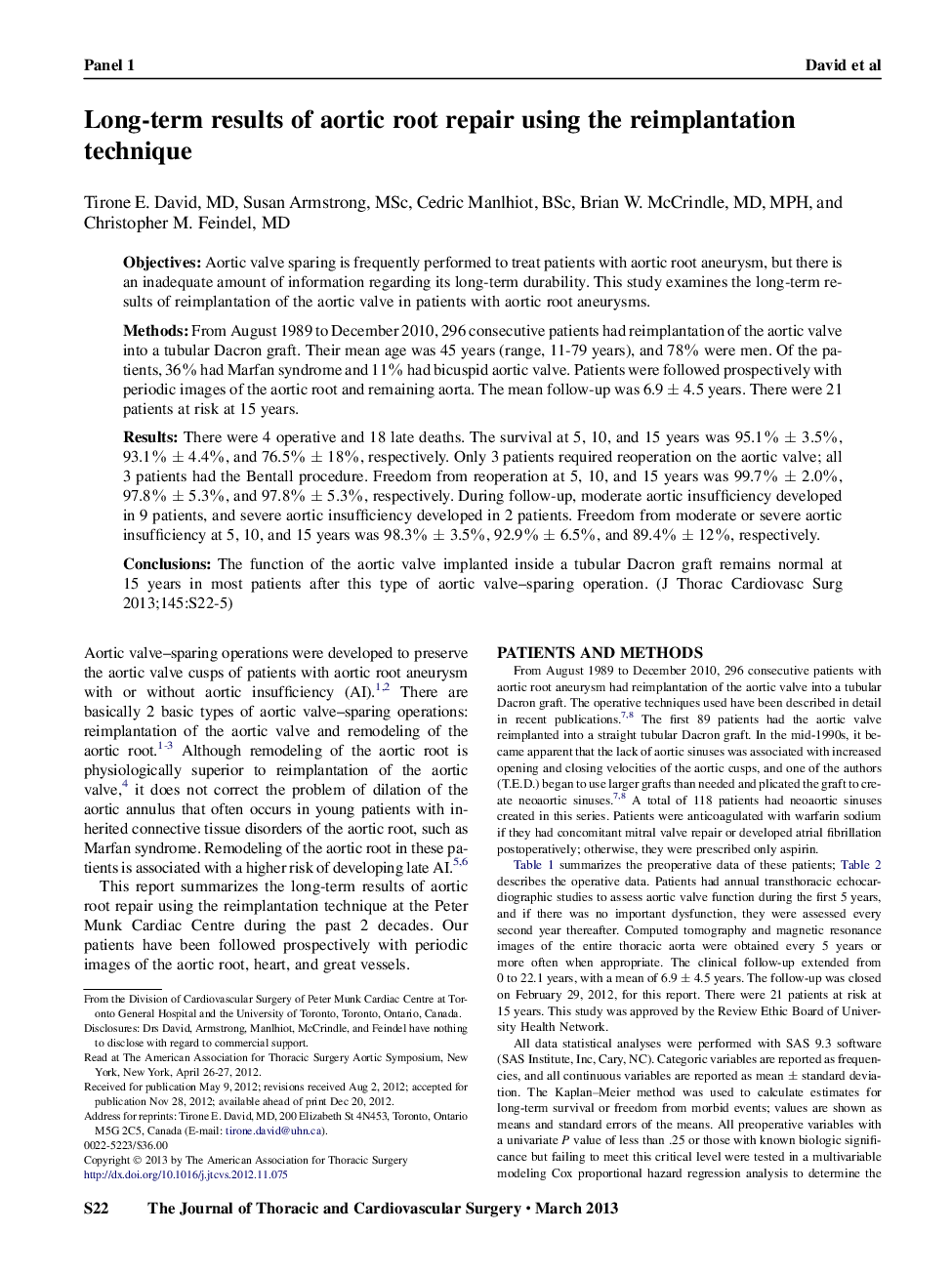| Article ID | Journal | Published Year | Pages | File Type |
|---|---|---|---|---|
| 2981275 | The Journal of Thoracic and Cardiovascular Surgery | 2013 | 4 Pages |
ObjectivesAortic valve sparing is frequently performed to treat patients with aortic root aneurysm, but there is an inadequate amount of information regarding its long-term durability. This study examines the long-term results of reimplantation of the aortic valve in patients with aortic root aneurysms.MethodsFrom August 1989 to December 2010, 296 consecutive patients had reimplantation of the aortic valve into a tubular Dacron graft. Their mean age was 45 years (range, 11-79 years), and 78% were men. Of the patients, 36% had Marfan syndrome and 11% had bicuspid aortic valve. Patients were followed prospectively with periodic images of the aortic root and remaining aorta. The mean follow-up was 6.9 ± 4.5 years. There were 21 patients at risk at 15 years.ResultsThere were 4 operative and 18 late deaths. The survival at 5, 10, and 15 years was 95.1% ± 3.5%, 93.1% ± 4.4%, and 76.5% ± 18%, respectively. Only 3 patients required reoperation on the aortic valve; all 3 patients had the Bentall procedure. Freedom from reoperation at 5, 10, and 15 years was 99.7% ± 2.0%, 97.8% ± 5.3%, and 97.8% ± 5.3%, respectively. During follow-up, moderate aortic insufficiency developed in 9 patients, and severe aortic insufficiency developed in 2 patients. Freedom from moderate or severe aortic insufficiency at 5, 10, and 15 years was 98.3% ± 3.5%, 92.9% ± 6.5%, and 89.4% ± 12%, respectively.ConclusionsThe function of the aortic valve implanted inside a tubular Dacron graft remains normal at 15 years in most patients after this type of aortic valve–sparing operation.
